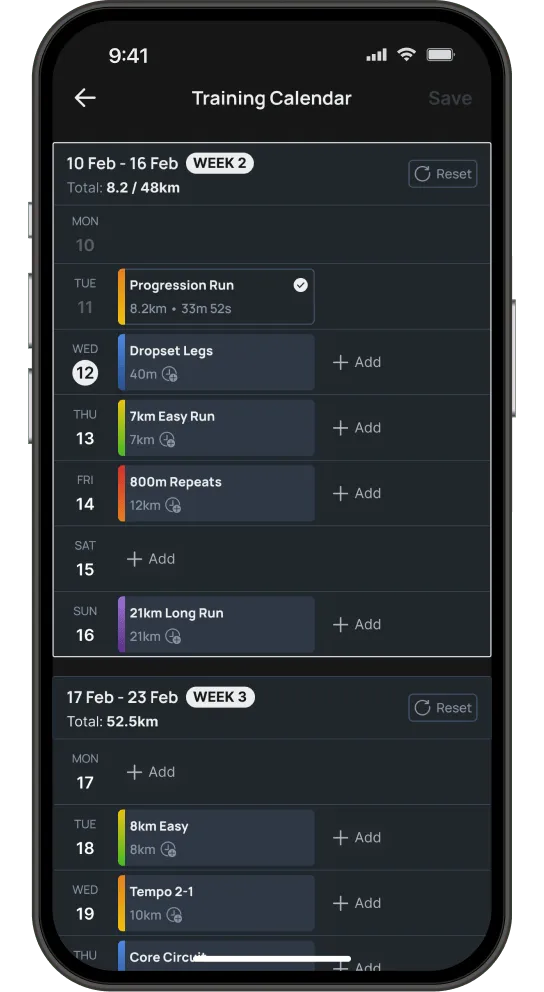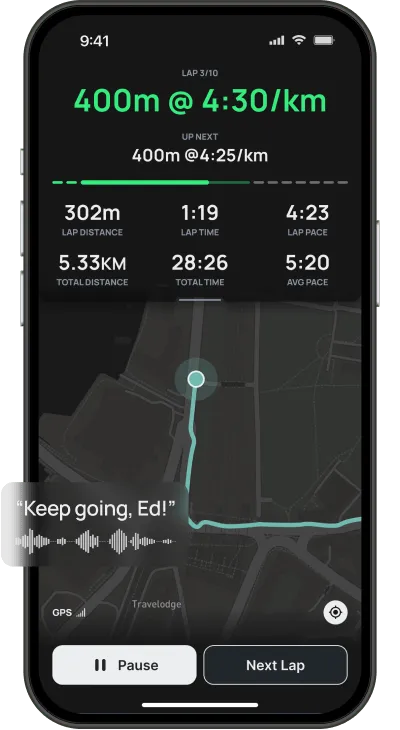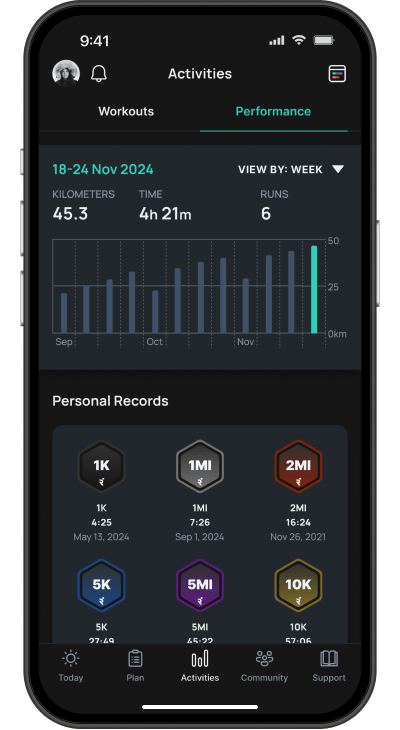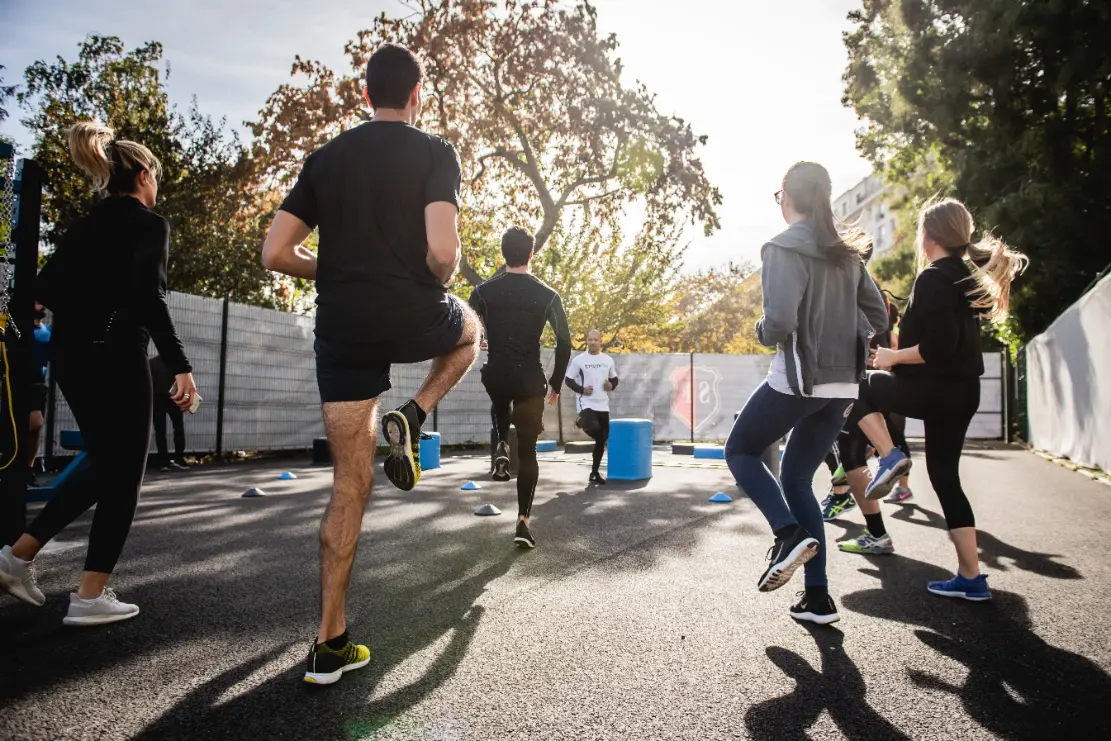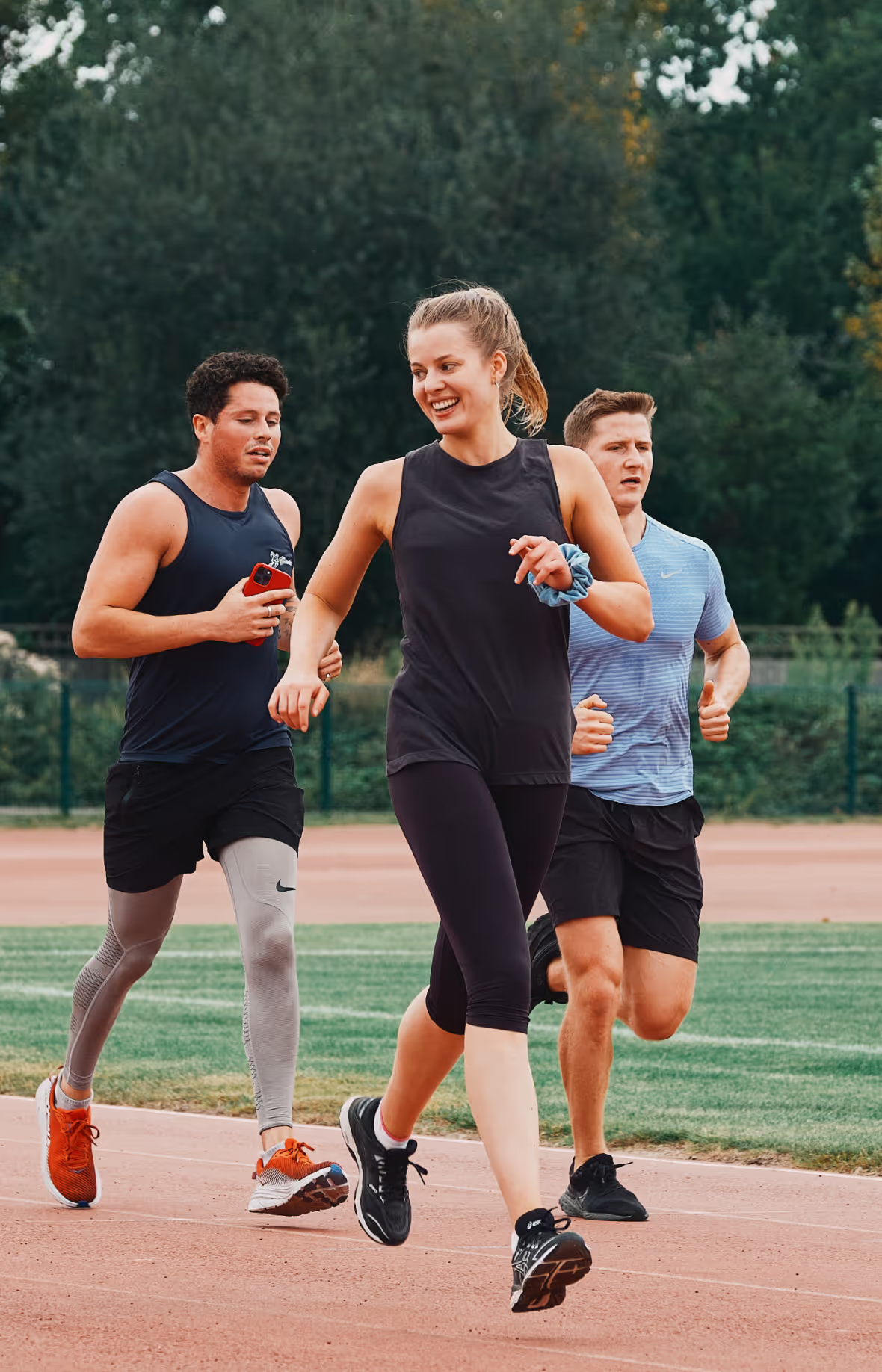Return To Running Training Plan
Life happens, breaks happen - what matters is how you return. Runna gives you a tailored, supportive path back to ensure you rebuild endurance, strength, and belief in your body one run at a time.
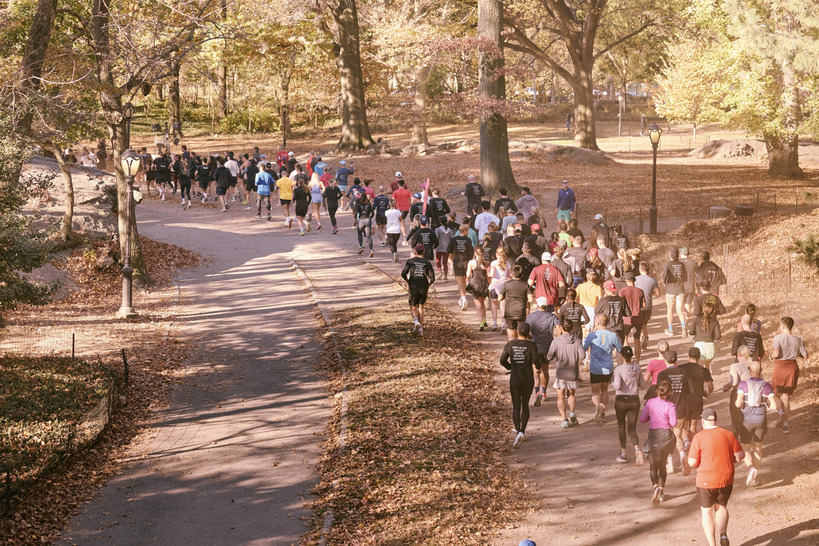
How to return to running
Getting back into running after time off can feel daunting - but with the right approach, it can also be exciting.
Whether your goal is to run a relaxed 5k, improve overall fitness, or simply get back into a rhythm, success comes from easing in gradually and focusing on the foundations. That means refreshing your form, building strength alongside your runs, and staying smart with recovery and nutrition.
For many, a steady 5k (5 kilometers, or about 3.1 miles) is the perfect reentry point. It’s achievable, motivating, and a great way to measure progress. Once you’ve hit that milestone, you can gradually work on pace, distance, or even sign up for a race to give yourself a new goal. Consistency is what really drives progress. To help stay on track, try:
• Creating a weekly routine with a few short, manageable runs
• Adding sessions to your calendar so they become part of your schedule
• Signing up for a race to give yourself accountability and motivation
• Running with friends, a club, or a training buddy for extra support
Runna makes this simple by building a personalized plan that adapts to your fitness, goals, and availability. We will give you the structure and support to rebuild fitness safely, regain consistency, and rediscover the joy of running, no matter how long it’s been.

Why choose our return to running training plan?
No matter your break or your goal, we’ll give you the structure and support to return with confidence.
How to get started
We will guide your comeback step by step - giving you the structure, confidence, and motivation to rebuild stronger than ever.
Choose your plan
Select the return-to-running plan - we’ll adapt it to your fitness and schedule so every step feels achievable.
Download the app
Download the app, log in, and you’ll have your full training plan - complete with runs, tips, and guidance - at your fingertips.
Run, run, run!
Simply tap ‘Go’ and follow along. Every run is laid out clearly, so you always know exactly what to do.
Hit that goal
Stay consistent and you’ll finish the plan feeling confident, capable, and proud of your return.
Workouts explained
Your return to running plan includes a mix of sessions - each with a clear purpose. Here’s what they are and how they’ll help you rebuild safely.
Tips for your return to running plan
These expert-backed tips will help you train smarter, avoid injury, and stay motivated. From pacing and recovery to gear and mindset, discover just a small snippet of all the tips, nutrition and coaching advice you'll have at your fingertips with a Runna training plan.
Nutrition
Training is only half the equation - what you eat fuels both your runs and your recovery. When coming back after time off, smart nutrition helps your body adapt, rebuild strength, and avoid setbacks.
- Protein: Aim for a steady intake across the day to repair muscles and rebuild what you may have lost during your break. Lean meats, eggs, dairy, tofu, beans, and lentils are all strong options.
- Carbs: Your main source of energy. Add more before longer or harder runs to power performance. Focus on complex carbs like oats, rice, quinoa, fruit, and sweet potatoes for steady fuel.
- Hydration: Even small dips in hydration can increase fatigue and effort. Drink consistently throughout the day, not just before or after runs.
- Caffeine: If you’ve used it before, caffeine can give you an edge before speed sessions or races by boosting focus and perceived energy.
Carb-loading isn’t necessary for shorter runs, but a carb-rich snack or meal 1–2 hours before you head out — like a banana with toast or oatmeal with fruit - helps you feel energized and ready. If weight management is part of your goal, avoid crash diets. Balance, consistency, and patience will get you results that last.
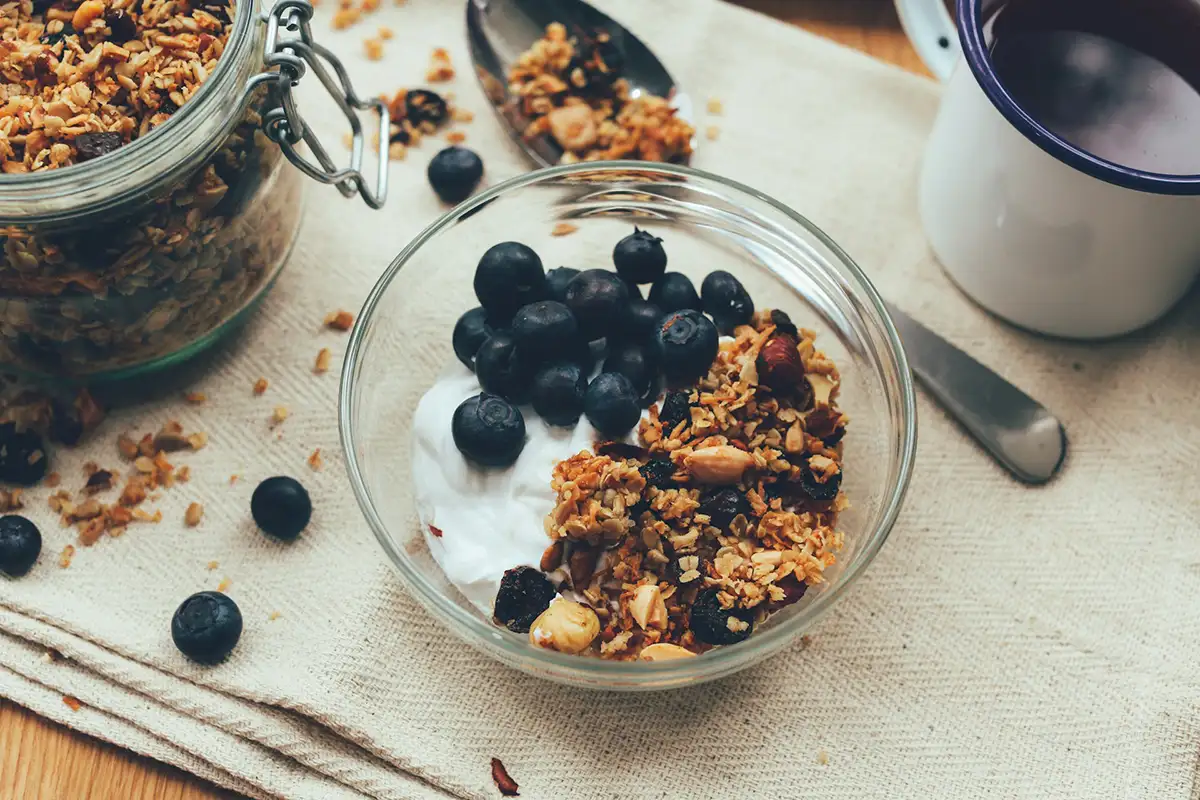
Cross-training and strength training
A strong comeback isn’t just about running. Cross-training and strength work reduce injury risk, rebuild lost fitness, and make every run feel smoother.
Cross-training: Activities like cycling, swimming, rowing, or elliptical boost your aerobic fitness without piling on impact. Perfect if you’re easing back after injury or feeling soreness from your first runs. Hiking or brisk walking are also great options for maintaining endurance while giving your legs a break.
Strength training: Vital for long-term resilience. Building strength in your glutes, hamstrings, quads, and core improves stability and reduces injury risk. Studies show it can boost running economy by 8–12%, meaning you’ll run faster and farther with the same effort.
Why it matters after a break: Time off can weaken stabilizing muscles and create imbalances. Strength and cross-training help correct these, so you return more balanced and durable than before.
With Runna, you can add personalized strength sessions that slot seamlessly into your running plan. Choose routines based on your equipment (from bodyweight at home to full gym) and schedule, so you can stay consistent without overwhelm.
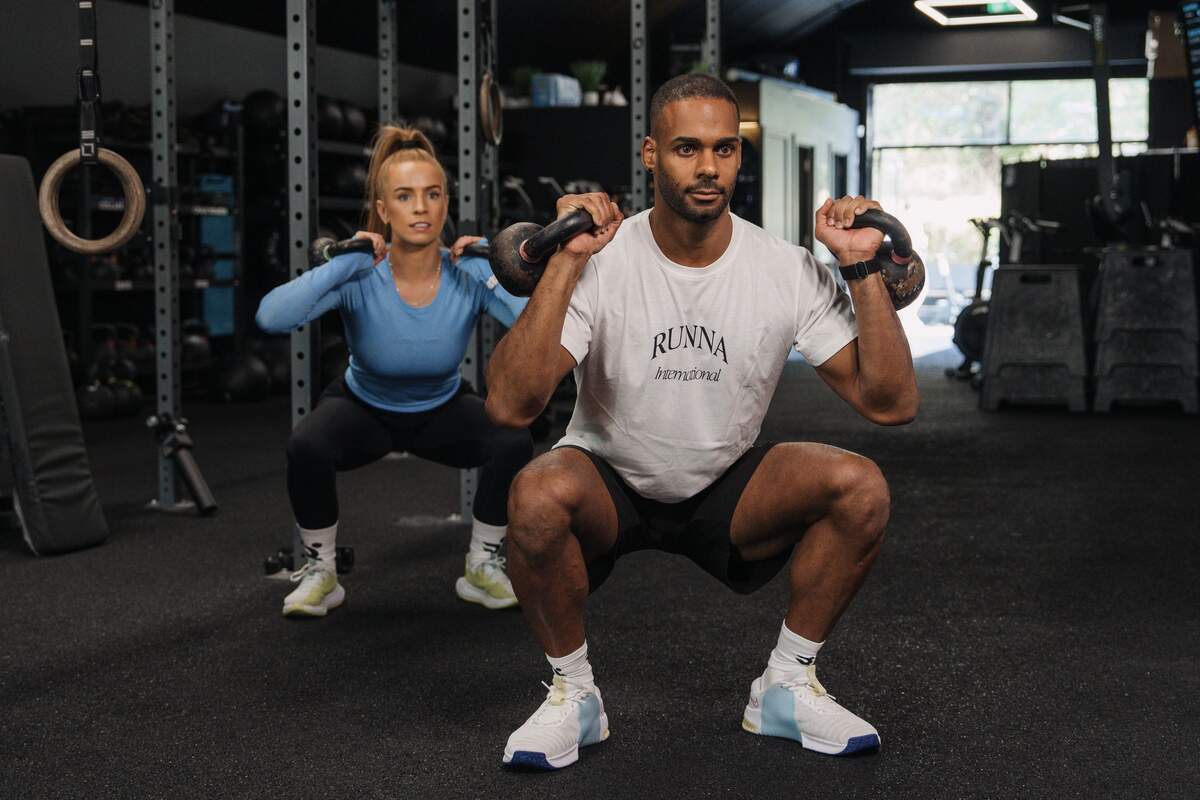
Pacing
After time off, pace can feel unpredictable - but the goal isn’t speed right away, it’s consistency and control. Running by effort helps you rebuild fitness safely while regaining your rhythm.
Why it matters: Smart pacing prevents burnout, keeps training sustainable, and allows your body to adapt week by week. By managing effort, you’ll build endurance without overdoing it.
What to focus on:
- Run most sessions at an easy, conversational pace - you should be able to talk in full sentences.
- Use walk-run intervals if needed. They reduce impact, ease fatigue, and help you extend distance without strain.
- Save faster efforts for later once consistency is rebuilt - starting too hard is the quickest route to setbacks.
Remember: not every run needs to be quicker than the last. Progress is about steady mileage and comfort first.
How to improve: Notice how your body feels rather than chasing numbers on a watch. Over time, as fitness grows, your “easy” pace will naturally get faster without extra effort.
Think of this stage as laying the foundation. Run relaxed, build consistency, and let speed return naturally.
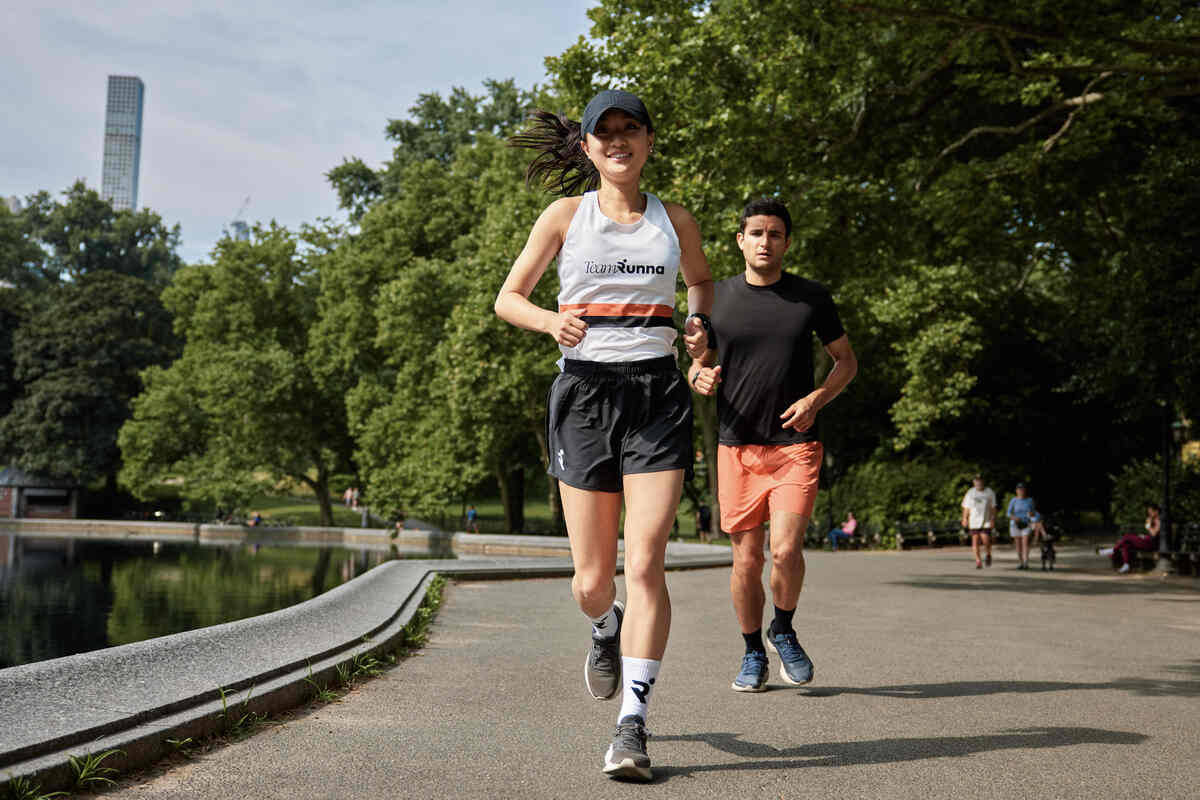
Form
After time away, form can feel rusty - but efficient mechanics will come back quickly with practice.
- Why it matters: Good form reduces injury risk, makes running feel smoother, and helps you use less energy per step.
- What to focus on: Stay tall through your posture, keep shoulders relaxed, and let arms drive rhythmically by your sides. Aim for a light, quick cadence to reduce impact on your joints.
- How to improve: Start small. Pick one cue at a time - like staying relaxed or landing softly - and apply it on easy runs. Over time, these cues become habits.
Tip: Think of this phase as refining, not reinventing. You already have muscle memory - you’re just bringing it back online.

Recovery
Coming back after time off means your body needs extra care to adapt and grow stronger. Recovery isn’t downtime - it’s training that happens behind the scenes.
Smart recovery repairs muscles, lowers injury risk, and keeps energy levels steady so you can enjoy your runs and stay consistent.
- Sleep: Aim for 7–9 hours a night. This is when your body does the repair work.
- Mobility: Stretching, yoga, or Pilates reduce stiffness and support flexibility as mileage grows.
- Massage & tools: Foam rollers, massage guns, or occasional sports massage help release tight muscles.
- Rest days: Don’t push through fatigue - one extra day off protects consistency far more than forcing a run.
- Active recovery: Light walking, swimming, or cycling boosts circulation and keeps you moving without adding stress.
Remember: Listen to your body. A slower comeback with good recovery will get you fitter, faster, and stronger in the long run.

Gear
Good gear sets you up for comfort, confidence, and consistency. Returning to running is the perfect time to reassess what’s working.
Supportive, reliable gear removes distractions and helps every step feel smoother - so nothing holds you back.
What to update:
- Shoes first: Fresh, cushioned shoes protect joints and muscles. If yours are worn out, replace them - ideally after a proper fitting.
- Comfortable clothing: Technical fabrics wick sweat and prevent chafing. Skip cotton, which traps moisture.
- Track progress: Use your phone or a GPS watch to monitor runs. Runna syncs seamlessly with Garmin, COROS, Apple Watch, and Strava.
- Helpful extras: A belt or armband for essentials, plus sunglasses, hat, and sunscreen for all-weather protection.
- Reassess your kit: Coming back is the perfect chance to swap old or uncomfortable gear for options that help you feel confident and prepared.
Golden rule: don’t save new shoes or kit for a big run or race. Practice with everything in training so you know it works for you.
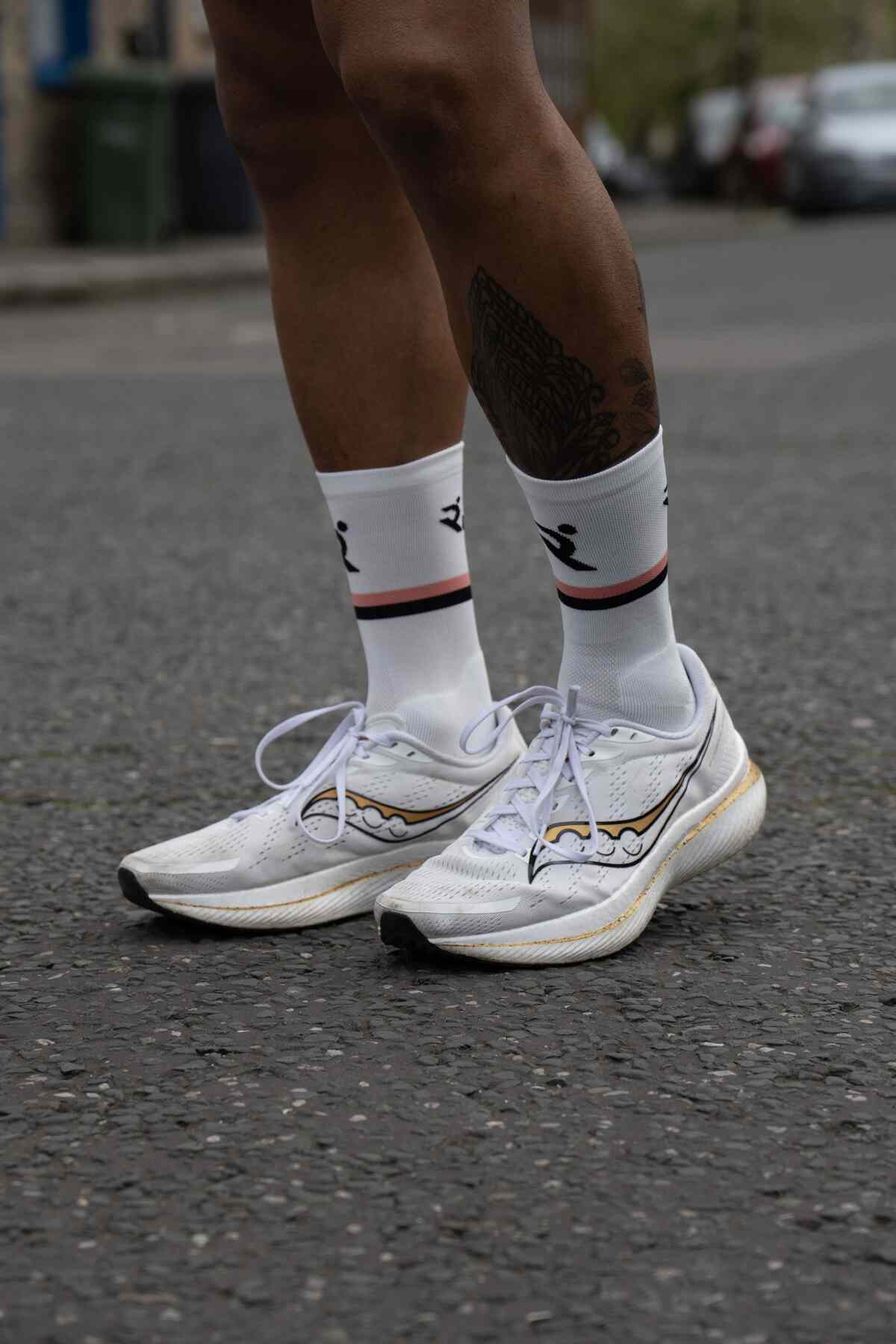
As featured in




Stories from Runnas
FAQs: All you need to know about returning to running
When should I start a return to running plan?
You should only begin once you feel ready to run again after time away, whether due to injury, illness, or a long break.
If you’re coming back from injury, make sure you’ve been cleared by a healthcare professional and can jog pain-free for a few minutes before starting structured training.
How long will it take me to get back into running shape?
The timeline depends on how long you’ve been away and why you stopped. If you’ve had just a short break, you may regain your fitness within a few weeks. If it’s been several months or you’re recovering from injury, it could take 8–12 weeks or more to rebuild your endurance and strength. The key is gradual progress - Runna will pace this for you so you don’t do too much too soon.
How many times per week should I run when returning?
Most people start with 2–3 sessions per week, allowing plenty of recovery between runs. Once your body adapts, you can gradually increase the frequency.
Do I need to do strength training when returning to running?
It’s not mandatory, but it’s one of the best things you can do to stay healthy as you return. Strengthening your legs, hips, and core will help protect against injury and prepare your body to handle running loads again. With Runna, you can integrate tailored strength sessions alongside your return-to-running plan so you build back stronger.
What should I do if I feel sore or tired during my comeback?
Some muscle soreness is normal when getting back into running, but sharp or worsening pain is a warning sign. If you’re overly fatigued or sore, take an extra rest day or swap a run for a walk, stretch, or cross-training session.
Protecting consistency over weeks is more important than forcing one workout.
How do I avoid injuries when returning to running?
The biggest mistake is trying to pick up where you left off. Instead, ease back gradually with shorter runs, walk/run intervals, and steady increases in mileage. Strength training and mobility work will also help protect you against setbacks.
Runna structures your return-to-running plan to progress safely, so you rebuild fitness without overloading your body.
Can I return to running if I've been away for years?
Yes! Even if it’s been years since you last ran, you can still make a safe and successful return. You’ll likely need more time to adapt, starting with shorter, slower sessions, but consistency will pay off.
Your Runna plan adapts to your current level, not where you were before, so you can build back at the right pace.
What should I focus on once I've completed a return to running plan?
Once you’re comfortable running again, you can move on to other goals - whether that’s running further, running faster, or preparing for a specific race.
Inspiration

Top Tips for Returning to Running After a Break
Getting back into running after a long break can be challenging, but we're here to help. Here are our top tips.

How to Improve Your Running Form
Want to run efficiently and reduce your chance of injury? Here are our top tips on how to nail your running form and run stronger!

5k & 10k checklist: All the essentials for a smooth race
Ready for your next 5k or 10k race? Make sure you have all the essentials you need to bring to the start line with you for a smooth race – and get ready to set a new PR!

